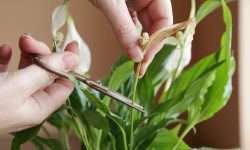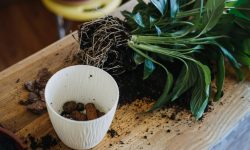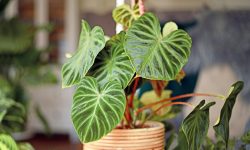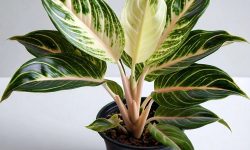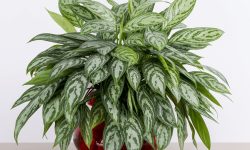Rhododendrons are beloved for their breathtaking spring blooms and glossy green leaves that brighten any landscape. These elegant shrubs bring a touch of sophistication to gardens, offering a palette of colors ranging from soft pastels to deep purples. Yet behind their beauty lies a plant that demands careful attention. Without the right soil, water, and light, even the healthiest rhododendrons can struggle to thrive. Understanding their unique needs is the first step toward enjoying spectacular flowers every year.
Caring for rhododendrons is both an art and a science. It involves creating the perfect balance of moisture, acidity, and protection from extreme conditions. With the proper techniques, these plants can flourish for decades, transforming your garden into a show of color and fragrance each spring. This guide will walk you through expert tips on how to care for rhododendrons so they reward you with lasting beauty season after season.
Understanding Rhododendron Growth Habits
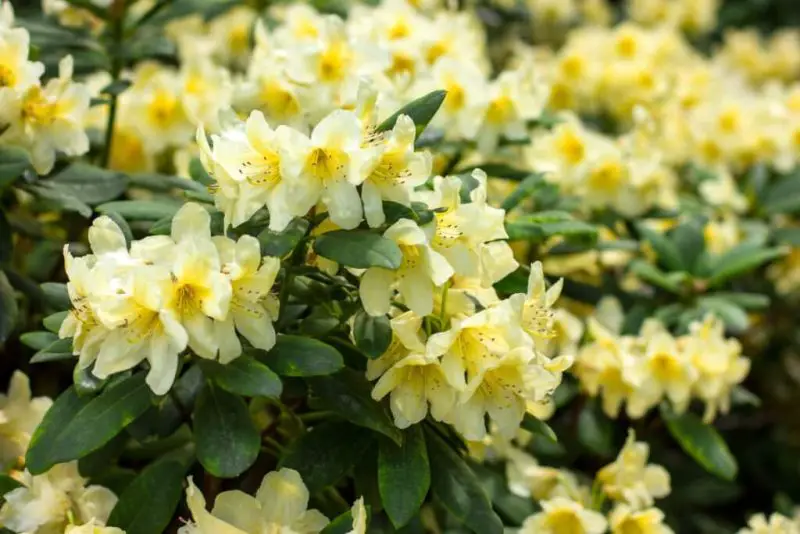
Rhododendrons have unique growth habits that set them apart from many other flowering shrubs. They are evergreen or deciduous plants with a shallow, fibrous root system that spreads close to the soil surface. This structure allows them to absorb nutrients efficiently in rich, well-drained soil but also makes them vulnerable to dry or compacted conditions. Unlike deep-rooted shrubs, rhododendrons rely on consistent soil moisture and protection from root disturbance. Their leaves are thick and leathery, helping them retain water, but they still need moderate humidity to maintain healthy growth.
These shrubs typically grow slowly, developing a dense and rounded form over time. The pace of growth depends on the variety and environment—some compact hybrids may stay small, while others can reach impressive heights of ten feet or more. Rhododendrons produce new growth in late spring and early summer, followed by flower bud formation in midsummer. Those buds remain dormant through winter before bursting into bloom in spring. Understanding this cycle is key to proper care, especially when timing watering, fertilizing, and pruning.
Rhododendrons also have a natural preference for dappled light, similar to their native woodland habitats. Too much sun can scorch their leaves, while heavy shade can reduce blooming. Their ideal growing conditions include morning sunlight and afternoon shade, combined with slightly acidic soil rich in organic matter. When these needs are met, rhododendrons reward gardeners with vigorous growth, glossy foliage, and abundant blossoms each year. Knowing their habits helps you create the perfect balance of light, soil, and moisture for thriving plants season after season.
Choosing the Right Location for Rhododendrons
Winter Care and Cold Protection for Rhododendrons
Preparing Rhododendrons Before Winter
Rhododendrons, though resilient, are sensitive to harsh winter conditions, especially cold winds and fluctuating temperatures. Preparing them in advance helps prevent winter burn and bud loss. As autumn approaches, gradually reduce fertilizing and pruning to allow the plant to slow its growth naturally. This hardens the wood and prepares it for dormancy. Continue watering deeply until the ground begins to freeze — hydrated roots are less likely to suffer from cold damage. Applying a thick layer of mulch, around three to four inches, helps insulate the soil and maintain a stable temperature around the root zone throughout winter.
Sheltering rhododendrons from wind is equally important. Cold, dry winds can draw moisture from the leaves faster than the roots can replace it, causing browning or curling. Planting near a fence, hedge, or building provides natural protection, but if exposure is unavoidable, wrap burlap screens around the shrubs to block wind. Avoid using plastic coverings, as they trap moisture and cause overheating on sunny days. For potted rhododendrons, move containers to a sheltered area such as a porch or unheated garage. Proper fall preparation ensures your plants face winter with strength and return in spring full of life and color.
Protecting Rhododendrons During Harsh Freezes
Once winter sets in, consistent protection becomes essential to prevent frost damage and dehydration. During prolonged cold spells, check soil moisture periodically — even frozen ground can dry out due to wind. Water lightly on warmer days to replenish moisture without soaking the roots. For young or recently planted rhododendrons, adding an extra layer of mulch around the base helps keep roots insulated. Avoid piling mulch directly against stems, which can cause rot. Snow, though heavy, can serve as a natural insulator; gently shake off large accumulations that might break branches but allow a light layer to remain.
In regions with severe frost, consider using burlap wraps or breathable frost blankets around the entire shrub. These protect leaves from windburn and temperature shock while allowing air circulation. Avoid pruning or feeding during winter, as it may stimulate growth that cold temperatures could damage. Once spring arrives, remove protective coverings gradually to prevent sunscald on newly exposed leaves. With careful winter maintenance and proper insulation, your rhododendrons will emerge from dormancy healthy, vibrant, and ready to burst into colorful bloom as soon as temperatures rise.
Troubleshooting Common Rhododendron Problems
Yellowing Leaves and Poor Growth
When rhododendron leaves start turning yellow or lose their luster, it’s often a sign of stress caused by improper soil conditions or nutrient imbalance. The most common reason is high soil pH, which prevents the plant from absorbing essential nutrients like iron and magnesium. Rhododendrons thrive in acidic soil with a pH between 4.5 and 6.0. If the soil becomes too alkaline, chlorosis develops — the veins stay green while the leaf tissue turns yellow. To fix this, test the soil and amend it with elemental sulfur or iron sulfate to restore acidity. Avoid using lime-based mulch or tap water high in calcium, which can raise pH over time.
Poor drainage is another frequent culprit. When roots sit in soggy soil, they lose oxygen and can’t absorb nutrients efficiently. This results in stunted growth and yellowing foliage. To improve conditions, ensure the planting site has loose, well-aerated soil, ideally amended with pine bark or leaf mold. Regular mulching helps retain moisture without waterlogging the roots. In cases where yellowing persists despite good soil conditions, applying a balanced, acid-loving fertilizer may help restore vigor. Once pH and drainage are corrected, the leaves gradually regain their healthy green color, and the plant resumes robust growth.
Leaf Curling and Browning Edges
Curling leaves and brown edges often indicate environmental stress rather than disease. These symptoms commonly appear after exposure to strong wind, intense sunlight, or sudden temperature changes. During winter, low humidity and cold winds can draw moisture from leaves faster than roots can replace it, leading to winter burn. Providing windbreaks, mulching heavily, and watering deeply before freezing temperatures arrive can help minimize this problem. In summer, excessive heat or reflected sunlight from nearby walls can also scorch leaves. Relocating the plant to partial shade or providing afternoon protection can restore balance.
If leaf edges brown despite mild weather, inconsistent watering or compacted soil may be the issue. Rhododendrons need steady moisture, and drought stress quickly shows on their foliage. Check soil conditions regularly and water deeply when necessary, ensuring proper drainage. Occasionally, browning can result from fertilizer burn if nutrients are applied too heavily. Flush the soil with water to dilute excess salts and avoid fertilizing until the plant recovers. Maintaining even moisture and protecting rhododendrons from environmental extremes will keep leaves lush and blemish-free year-round.
Lack of Blooms or Weak Flowering
Few things disappoint gardeners more than a rhododendron that refuses to bloom. This problem often stems from improper pruning, insufficient light, or nutrient imbalance. Rhododendrons set their flower buds shortly after blooming, usually in early summer, so pruning too late in the year removes next season’s buds. To avoid this, prune immediately after flowering is complete. Light is another key factor — too much shade reduces bloom production, while partial sunlight encourages abundant blossoms. If your plant is in dense shade, consider relocating it to a brighter spot with morning sun.
Nutrient imbalance, especially excessive nitrogen, can also suppress flowering by promoting leafy growth instead of buds. Use a fertilizer specifically made for acid-loving plants, with a moderate nitrogen content. Additionally, environmental stress such as drought or severe winter cold can damage developing buds. Protecting plants with mulch and consistent watering helps prevent this. Once growing conditions stabilize, rhododendrons typically return to their natural blooming rhythm. With proper care, balanced nutrients, and thoughtful pruning, even reluctant bloomers will reward you with stunning clusters of color in the following season.
FAQ About Caring for Rhododendrons
How often should I water rhododendrons?
Rhododendrons prefer consistently moist soil, but not soggy conditions. Water deeply once or twice a week, allowing moisture to reach the root zone. During hot or dry periods, increase watering frequency. Always check the top few inches of soil — if it feels dry, it’s time to water again.
When is the best time to prune rhododendrons?
The ideal time to prune rhododendrons is immediately after they finish flowering, usually in late spring or early summer. Pruning at this time prevents cutting off developing buds for the next season. Light trimming maintains shape, while heavier pruning can rejuvenate older plants.
Why are my rhododendron leaves turning yellow?
Yellowing leaves often indicate high soil pH or poor drainage. Rhododendrons thrive in acidic soil with a pH between 4.5 and 6.0. Test your soil and amend it if needed with sulfur or iron sulfate. Also, make sure the planting area drains well to prevent root suffocation.
How can I protect rhododendrons during winter?
Before winter, apply a thick layer of mulch around the base to insulate roots and retain moisture. Water deeply before the ground freezes, and shield plants from harsh winds with burlap screens. For potted rhododendrons, move them to sheltered areas like a porch or unheated garage.
Do rhododendrons need fertilizer every year?
Rhododendrons benefit from annual feeding with fertilizer made for acid-loving plants. Apply in early spring as new growth appears, and again lightly after flowering if needed. Avoid overfertilizing or feeding late in the season, as it can cause tender growth that’s vulnerable to frost.
Conclusion
Caring for rhododendrons requires patience, consistency, and an understanding of their unique needs. When planted in acidic, well-draining soil and given proper watering, pruning, and seasonal protection, these shrubs reward you with brilliant blooms and lush foliage. Each step — from soil preparation to pest prevention — contributes to their lasting vitality. By following expert care practices and observing your plants closely, you’ll enjoy healthy, vibrant rhododendrons that brighten your garden every year. With the right care, their beauty becomes not just seasonal but a long-term centerpiece in any landscape.

